The Man Who Knew Too Much (1934)
Directed by: Alfred Hitchcock
Written by: A.R.Rawlinson, Charles Bennett, D.B.Wyndham-Lewis, Edwin Greenwood, Emlyn Williams
Starring: Edna Best, Frank Vosper, Leslie Banks, Peter Lorre
UK
AVAILABLE ON DVD
RUNNING TIME: 81 min
THE HITCHCOCK CAMEO: Walking across a road in a dark trench coat as a bus passes
REVIEWED BY: Dr Lenera, Official HCF Critic
Bob and Jill Lawrence are a British couple on holiday in Switzerland with their daughter Betty. Jill is participating in a clay pigeon shooting contest. Their friend Louis Bernard, who competes in a skiing event, is also staying in their hotel. One evening, as Jill dances with Louis, the Frenchman is suddenly shot. Before dying, he tells her that she needs to go to his hotel room, find a note hidden inside a bottle of toothpaste which contains some important information, and pass it on to the British consul. She finds the note, but then, just before the couple can pass on the information, they receive a phone call. The voice at the end of the line tells her that Betty has been kidnapped….
Well, we’re finally here, at the point where Alfred Hitchcock began his only occasionally broken series of suspense thrillers that he soon became world famous for. Actually, I found some of Hitchcock’s earlier work better and more interesting than I thought it would be, but there’s no doubt that I was excited to be getting to The Man Who Knew Too Much, and start raving time and time again about the filmmaker who was the first old-time director that I got ‘into’, and whose style and outlook fascinated me from quite a young age. Actually The Man Who Knew Too Much is not one of Hitchcock’s greatest, but it certainly shows the director enjoying some freedom and really being allowed to show what he was good it. It’s an exciting, fast-paced thriller which, as Hitchcock’s films would from here on would often do, quickly resolves itself into a series of well-conceived set-pieces not unlike more recent action thrillers, but without slowing down or detracting from the plot. It doesn’t have the depth that Hitchcock would later bring to his work, and sometimes feels a little cramped due to the small studio it was mostly shot in, but it’s tremendous fun through and through with a headlong pace that may surprise many first-time viewers.
After the failure of Waltzes From Vienna, Hitchcock really was at a low point in his career, despite having just moved to Gaumont-British, and I reckon he may have even jacked it in, but a saviour materialised in the form of Michael Balcon, who had headed Gainsborough Pictures in the 1920’s and had produced some of Hitchcock’s films there. In fact, he’d been a major force in launching and propelling his career. Waltzes From Vienna’s Tom Arnold had actually been an independent producer for Gaumont-British, and it was Balcon who had now moved to become head of that studio. He told Hitchcock he could make whatever project he wanted, so he resurrected the Bulldog Drummond’s Baby project about the agent whose child is kidnapped, and along with Ivor Montagu and his British-International collaborator Charles Bennett, altered it so that Drummond was no longer the hero. They made other changes here and here, like not having the hero’s wife turn out to be one of the kidnappers, and relocating one suspense scene from a barber shop to a dentist because the just-released I Am A Fugitive From A Chain Gang had a similar scene. The censors didn’t like the climax, which was a virtual recreation of a 1911 incident called the Sidney Street Siege where the police, to much condemnation, used firearms against some thieves. Hitchcock was asked to show the army bringing the guns. Filmed with no major incident, The Man Who Knew Too Much was disliked by and relegated to the bottom half of a double bill by C.J.Woolf, who oversaw Gaumont-British when Balcon was away, but was a hit with critics and public anyway.
What I found so striking this time round when viewing The Man Who Knew Too Much, and actually I hadn’t seen this particular Hitchcock film that often [I had always missed it when I was young and they would show length seasons of Hitchcock’s films on TV, while my older copy of it was of abysmal quality], is how quickly it gets going. We spend little more than ten minutes with our family having fun with in Switzerland [with some stock footage of skiers which doesn’t really match the studio footage, something which would be a common flaw with a filmmaker who preferred the control of filming in a a studio than on location] until their French friend is shot, and just before that is an odd piece of light tension when Jill and Louis seem quite fascinated with each other…while Bob doesn’t seem to care. The shooting is really sudden; a window shattering, Louis seeming to go into some sort of trance, and then a quick shot of blood forming on his shirt. The daughter is kidnapped only a couple of scenes later, after which we have the only dullish bit in the picture, as the couple are questioned but have made up their mind to find Betty again, following a clue in the note. Never mind that the stakes are now very high, because Louis was a spy, and he discovered that a shooting was being planned in the Albert Hall.
Now the film really goes into high gear as Bob and a secret service guy enter an especially dark and dingy area of Wapping to look for Betty. First they arrive at a dentist’s, and this guy is very sinister and Nazi-like, leading to the first scary dentist scene in cinema when Bob is having his teeth looked at, the dentist finds nothing wrong with them, and tries to gas him. Then we go to a the church of a sun worshipping cult [“I wonder if they’ll be naked?” says Bob’s companion], and here the tension, though still strong, is leavened with humour, the confrontation ending with chairs being thrown about and the organ being played to mask the sound of gunfire. Then we have the Albert Hall sequence, a brilliant piece of suspense. We know the shooting will occur on one single note, we have already heard the music bars leading up to the note, but don’t know when they will begin. As Arthur Benjamin’s Storm Clouds Cantata is played, a well chosen piece of music because of the way it builds and builds, increasingly gathering in excitement, the camera cuts repeatedly from angles of the Albert Hall to Jill trying to spot the shooter, and I could swear for the life of me that it was the real Albert Hall, but actually it wasn’t. They took shots of the real interior, projected them onto screens via mirrors, then seamlessly matched it with the live action [like the British Museum scene in Blackmail]. Even after this, the film isn’t over, and it now turns into an action movie of cops versus criminals, with much shooting and poor Betty menaced on the roof. Phew!
Now Hitchcock may have been asked to show the army bringing the guns in the above sequence, and he does show an army truck arriving, but just before that you also see the police captain at a local gunsmiths commandeering the guns there. He must have thought, rightly, that the censors would be so caught up in the action that they wouldn’t notice. He would successfully battle the censors again and again in the future. Now I said earlier that The Man Who Knew Too Much feels a bit cramped, and it really does. Hitchcock has trouble disguising the tiny size of the studio in this film, and the sets are perfunctory. Nonetheless he carefully visualises the film that is seems to get darker and darker, going from the white snow slopes of Switzerland to the top of a church at night. He also has no music except when we hear bits of the Benjamin piece played, to give the Albert Hall scene more impact.
In such a short, tight film, there isn’t too much room for characterisation, and the main couple are actually a little bland; they’re brave, determined and that’s about it, but Leslie Banks and Edna Best do well in portraying these characteristics. In any case, Hitchcock was already becoming more interested in his villains. The grinning assassin the crooks use is unnerving, and one helper rather sweetly wants to go home and cook her husband’s dinner, but the star of the film in many ways is the great Peter Lorre, something which the film’s poster, which was intended to evoke memories of his killer in M, emphasised. A superb character actor whose large popped eyes, slow and almost feminine way of speaking, and creepy voice virtually typecast him as shifty folk up to no good, he’s mesmerizing in this film. Replete with facial scar and white streak on his hair, he dominates every scene he is in despite his small size, is given the best lines, and while clearly playing an evil man who we feel could kill young Betty at any moment, he’s allowed some sympathy when his female collaborator dies, where we are allowed to actually feel sorry for him. Such complexity is rare in The Man Who Knew Too Much, and it maybe seems a little empty even when compared to some of the British films that followed, but, as a highly entertaining, straight down the line, thriller, it most definitely does the job it intended to. Now you probably know that Hitchcock remade this in 1956 under the same title . Which version do I like best? I’m sorry, but you’ll have to wait and see!
Rating: 










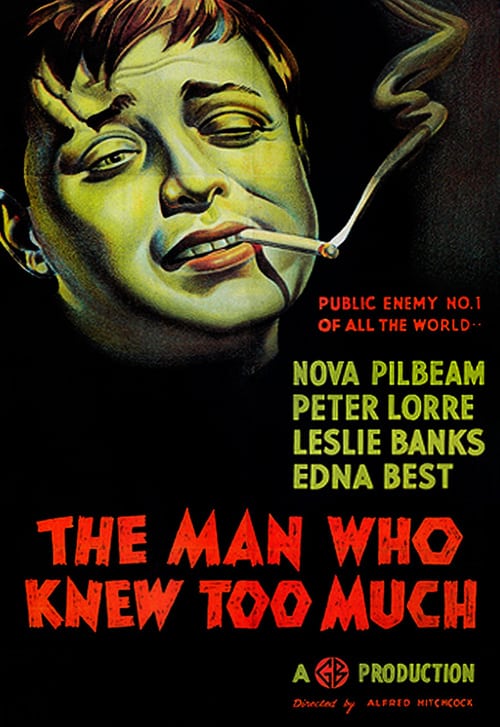
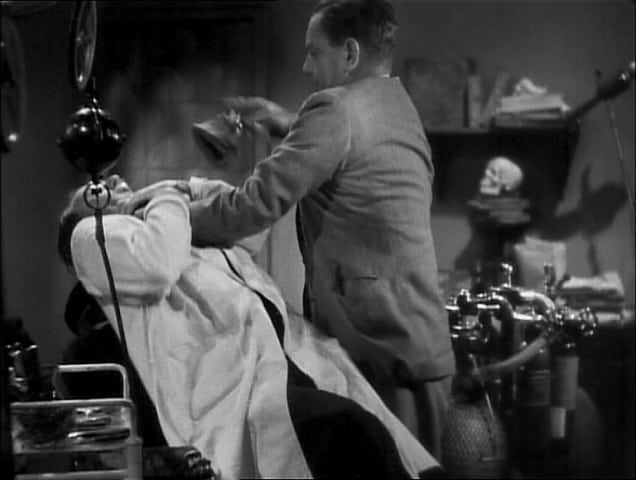
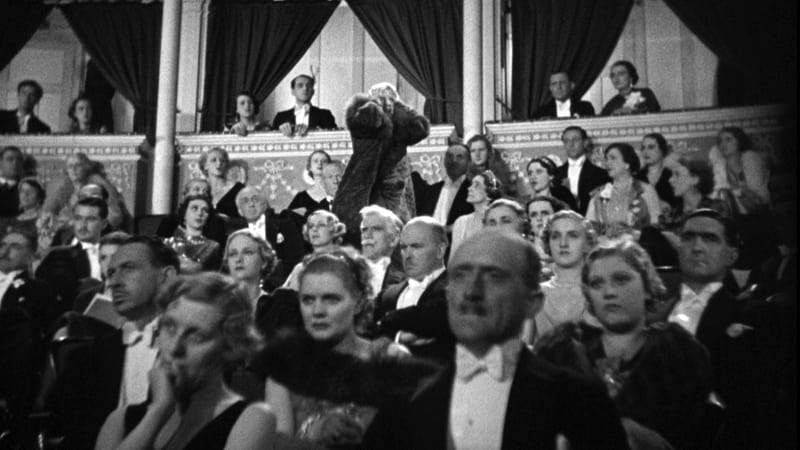

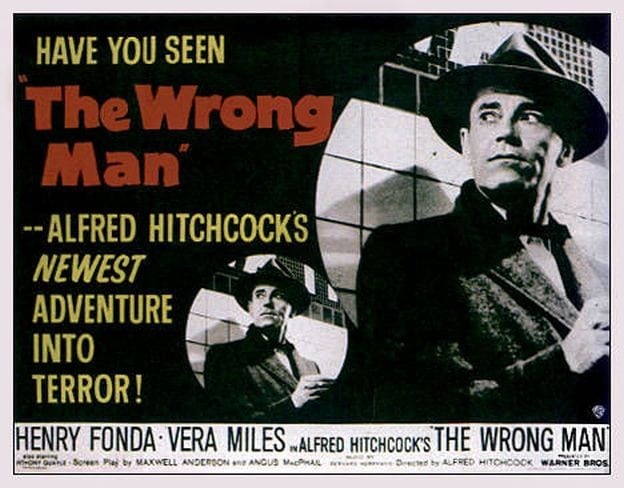

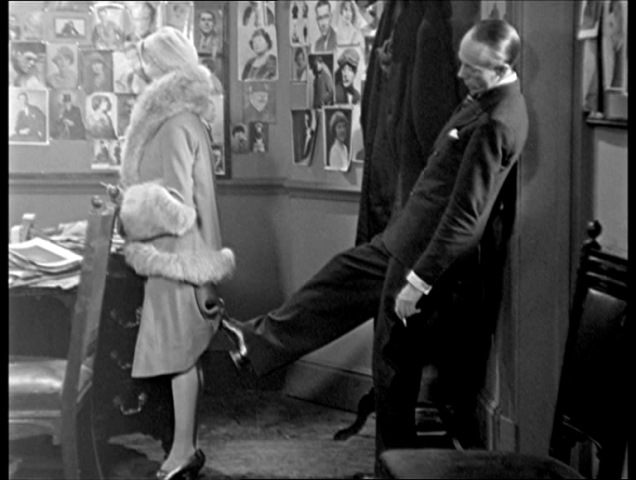
Be the first to comment